The challenges, solutions, and strategies for bridging the gender gap in tech have been discussed for years, but what progress has been made? In 2021, five million people worked in the UK’s tech industry – but only 17% of those roles were held by women. It’s well-known that diversity can fuel innovation and growth, and as we enter a new age of AI and technology, novel ideas will be needed.
So why are there still so few women in tech, and is something stopping them from entering – and staying in – the industry?
A quick look at the current gender divide in tech
Nothing is more telling about the real numbers of women in tech than looking at the GAFAM companies (Google, Apple, Facebook, Amazon, and Microsoft). In 2022, the percentage of employees who identify as women working in tech roles at Google stood at 25%, Facebook and Apple at 24%, and Microsoft at 23%. Amazon has the highest representation of women employment at 45% but doesn’t report their numbers for women in tech jobs.
Looking at women’s representation in the different tech specialisations, the Alan Turing Institute says that, although AI and data science are rapidly growing fields, only 20% of those jobs are held by women.
In product management (PM), women hold only 37% of positions, primarily in entry-level positions. This wasn’t always the case, though; since 2005, tech companies started introducing technical PM specialisations and new entry requirements, like a computer science degree. At that time, women only earned one in five computer degrees in the US; since then the industry has been moving away from gender-balanced PM teams.
Numbers from Zippia show that 40% of UX design roles are held by women, making the career an outlier in tech. This could be because UX is a more accessible career. Diverse backgrounds and experience are welcomed; if you have a degree in psychology, visual arts, or even marketing, you could be a good candidate for a role in UX.
Reasons for the gender gap in tech
Research by Accenture and Girls Who Code identified non-inclusive company culture as the biggest cause of the gender tech imbalance. In these workplaces, women feel overlooked, discriminated against, and discouraged by the lack of flexibility and access to women role models. Women of colour and lesbian, bisexual, and transgender women face even greater barriers.
Women in Tech ran a survey that pointed to the problem of the tech gender pay gap, which, in the UK, stands at 16% – much higher than the 11.6% national average. Respondents of the survey also said recruitment processes generally favour men, including job adverts being male-targeted.
How can we close the tech gender gap?
School
The tech gender imbalance starts early – in school and university. To create inclusivity there first needs to be access to computing classes in school and secondly, the encouragement to join. If young girls feel comfortable engaging in technical subjects and have a sense of belonging, they’ll establish an interest that could lead to tech studies.
University
In university, there needs to be clear pathways from studying to working. Again, the culture matters: a more inclusive university culture impacts a woman’s decision to look for a tech career (men also benefit from an inclusive environment, with their likelihood to look for tech careers also increasing).
Recruitment
Wired reports that while more companies are actively taking steps to build a pipeline of female talent at all hiring levels, businesses could boost this by hiring women who may lack a traditional computer science degree but have the right transferable skills and can be trained in the technical skills they need.
Policy and leadership
Companies should set diversity targets, introduce full pay transparency, and, importantly, consider the impact of technology on gender equality – such as when gender biases are baked into digital services and products.
Having a diverse leadership group will also establish an inclusive culture and drive opportunities. If you see women leading, you’ll be more empowered to do the same.
Opportunity
Companies can forge connections with groups such as Girls Who Code or Stemettes to give girls, young women, and non-binary people a chance to attend workshops and join mentoring programmes with technology and engineering companies.
Women are needed in the tech industry
Women have unique and distinct strengths to offer the tech industry.
Take, for instance, product management. Marty Cagan, Silicon Valley’s “guru of PM,” argues that while being smart, creative, and persistent are qualities all PMs need, women make excellent PMs because they often possess the qualities of emotional intelligence, humility, and stamina – all essential to excel in the job.
Women and minorities are critical to the fields of data analysis and data science, where unconscious bias can impact data sets and algorithms, leading to inaccurate conclusions and harmful policy decisions. A good read on this is Carolina Criado-Pérez’s Invisible Women: Exposing Data Bias in a World Designed for Men.
In her article, Why Are Women Encouraged to Go Into UX?, UX writer Daley Wilhelm says UX requires empathy and involves “cleaning up and caregiving”. These traits are associated with women and can help to understand and predict user behaviour. To explore the dangers of making assumptions about users, read Technically Wrong: Sexist Apps, Biased Algorithms, and Other Threats of Toxic Tech by Sara Wachter-Boettcher.
Gender diversity also has a significant impact on company performance and success; tech companies with a gender-diverse workforce see higher share prices.
Thriving in a male-dominated workplace
Some industries have a long way to go before they reach equal gender representation. But that alone shouldn’t stop women from entering their desired field. This is what you can do to ensure you’ve got fair opportunities to succeed:
Look for the right culture
To ensure you’ve chosen a business committed to equality and fairness, look for companies with diversity, equity, and inclusion as part of their core values and workplace culture, and check for equitable parental leave policies to avoid the “motherhood penalty.”
Get paid equally for your work
The pay gender gap in tech is real. Research shows that women are significantly less likely to get a raise even though they ask for them just as often as men.
Use sites like Glassdoor, Levels, and CWJobs to see what you should be earning and read this article on how to go about salary negotiation as a woman in tech.
Find a mentor or coach
A female mentor will help you navigate your career journey and expand your network while prompting conversations that can break down barriers and remove stigmas or biases. You could also engage a sponsor who will advocate for you and ensure your work gets seen in the right places, at the right time, by the right people.
Career coaching
Working one-on-one with career or executive coach can help you achieve your long-term goals in your career. It can also help you realise your strengths and potential, and give you the confidence to get the results you want.
King’s Product Management Career Accelerator learner Iryna assumed she’d be starting as an intern because she had no previous PM experience. Iryna said her confidence was transformed in just one session with her FourthRev Career Coach. The work with her coach also motivated Iryna to aim higher, helping her land the sole product manager role in an exciting startup.
This is how a career coach could help you achieve your goals as a woman in tech.
Elodie Hudson took the LSE Data Analytics Career Accelerator to change her career. Elodie’s coach was instrumental in making this transition from teacher to data analyst a success.
The highlight of my learning journey was the realisation that I could acquire skills that I previously thought were beyond my reach. It’s been life-changing.”
Elodie Hudson
Lead Data Scientist at AssessTech Analytics
Network with other women in tech
If you work in UI/UX, consider joining Ladies That UX, where you can share knowledge and connect with fellow UX designers from across the globe.
Women working in data analysis or science can explore the global communities at Women in Data, and if your passion is product management, join the Women In Product community of over 30,000 women and non-binary people.
Turn your ambitions into reality
We’ve been working to bridge the gender gap in education. Since we first launched our Career Accelerators in January 2022, 481 women have enrolled in our programmes to start their careers in tech.*
We’d love to help you make your tech career a reality. Browse the Career Accelerator portfolio and unlock your potential in a high-growth digital career.
* Female learners enrolled on a Career Accelerator as of January 2024.



